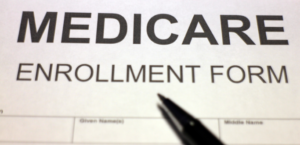Complete Medicare Resource
Center here:
877-88KEITH (53484)
When signing up for Medicare or changing your plan during Open Enrollment (which you can do now until December 7th), remember this: caveat emptor. This is Latin for let the buyer beware. In the case of Part B, it is wise for you – the buyer – to understand what you will pay for a premium, how that can change, and what your out-of-pocket expenses for services will be. It is important to understand the cost of Medicare. As with any Medicare coverage, it’s best to be proactive: ask ahead.
Part B, also known as Medical Insurance, covers doctors’ services, some outpatient care and some medical equipment and supplies. Each service or product has its own related fee. You also will pay a monthly premium for Part B. There are two ways to do this. You can have the fee deducted from your Social Security monthly benefit payment. Or you can be billed directly. With traditional Medicare, you are also required to pay a co-pay of 20%. There is no yearly limit on your co-payment amount. There is also an annual deductible. In 2020, this was $198.
Premiums are set every year by Medicare. As yet, they have not announced rates for 2021. We will notify you as soon as we know. If you pay through Social Security, they will not raise rates that will decrease your benefit payment. However, if Social Security benefits go up, chances are good that fees for Part B will increase accordingly.
The standard fee for Part B in 2020 is $144.60. As noted above, an increase in Part B cannot reduce your monthly Social Security payment.
Part B premium Based on Income
Your monthly fee will be more if your income is over a certain level. This is called Income Related Monthly Adjustment Amount (IRMAA). Income amount is based on the modified adjusted gross income amount on your federal income tax return from two years prior. It also takes into consideration whether you are single or married.
If you are single and your income is less than $85,000 or you are married and your combined income is less than $170.000, you will pay the standard premium. Here are the brackets and the amount you pay in addition to the standard premium:
Single: $85,000 to $107,000; Married: $170,000 to $214,000 = Standard plus $53.50
Single: $107,000 to $160,000; Married: $214,000 to $320,000 = Standard plus $133.90
Single: $160,000 to $214,000; Married: $320,000 to $428,000 = Standard plus $214.30
Single: more than $214,000; Married: more than $428,000 = Standard plus $294.60
When a co-pay can be costly
As we noted in last week’s blog, Part B: What You Get, doctors approved by Medicare can agree to accept “assignment.” This means that they will accept the amount that Medicare deems fit for the service they provide. You will be charged only the co-payment. If they do not accept assignment, their fee may be greater than that decreed by Medicare and you will be responsible for the difference. Good idea to ask before you select a physician.
What if Medicare won’t pay?
There is such a thing as an Advance Beneficiary Notice of Non-coverage (ABN). If the provider of the service you seek does not believe Medicare will pay, it can give you an ABN. The provider is not required to do this, but may do so voluntarily. You must sign it in order to receive the service(s) and three things can occur. You decide to receive the service anyway and want the bill sent to Medicare even if you understand you are responsible for the cost. But, you can appeal. Or, you agree to pay the full cost without appeal. Or you decide to not receive the service. Make this decision carefully.
Next: We skip to Medicare Part D because understanding outpatient prescription drug costs is important, especially since coverage can change from year to year. You have until December 7th to make any changes in your plan.
















